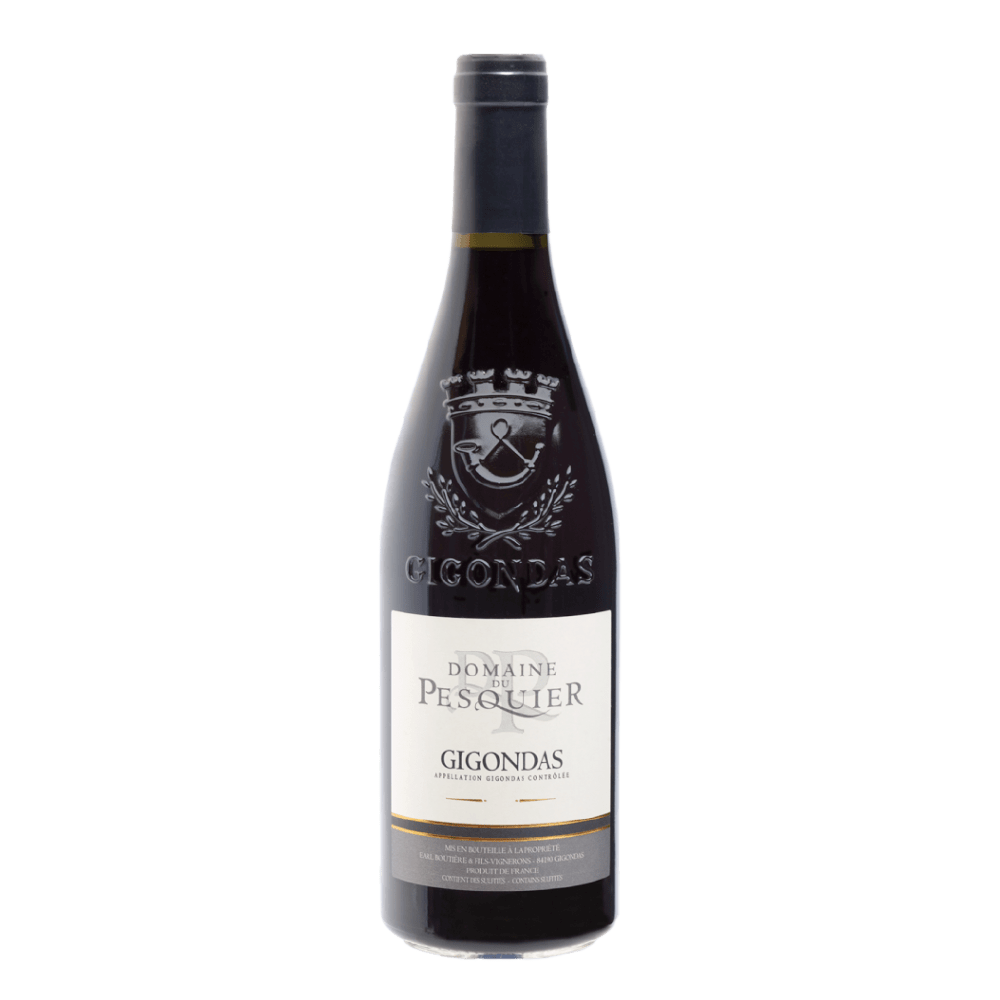No products in the cart.
Domaine du Pesquier Gigondas 2021/20
75% Grenache, 20% Syrah, 5% Mourvèdre
Raised plateau of stones and, marne at the foot of the village with some of the syrah from limestone terraces in the Dentelles hills above the village.
Ripe red and black fruits with pepper and touches of licorice on the nose. Medium to full-bodied on the palate, this complexly flavoured wine offers sweet fruit; pepper, herbs and cocoa with fine tannins and a great length. A wine to accompany a rich, late autumn / winter dish.
21.60€
Shipping costs are calculated per box of 6 bottles. Each box can contain a mixed selection of wines.
Beyond the Label
Reviews
Beyond the Label
Style
Red
Vintage
2021/20
Region
Gigondas, Rhône, France
Drinking time
3 to 12 years
Grape varieties
75% Grenache, 20% Syrah, 5% Mourvèdre
Reviews
Only logged in customers who have purchased this product may leave a review.
Producer profile
The Boutière family has run the domaine for four generations. Wines were first bottled in 1965 by the grandfather of the current owner, Mathieu. The domaine covers 24 ha (59 acres) with 17ha in the cru of Gigondas, 1 ha in Vacqueyras, 2 ha of Côtes du Rhône and 4 ha of IGP Vaucluse.The Gigondas vineyards are located on the stoney, marne raised plateau around the winery and on limestone terraces in the Dentelles hills above the village. Domaine du Pesquier has not followed the modern trend of producing multiple cuvées, such that the complexity of the single cuvée wine reflects a diversity of terroir and vine ages. The Côtes du Rhône-labelled wine is actually produced from superior Côtes du Rhône Villages terroir giving a Côtes du Rhône wine of higher pedigree. The reds are fermented in stainless steel with temperature control provided by submerged radiators fed with cool water from the domaine’s well. The Gigondas wine is aged in large wooden vats (“Foudres”). The other wines are aged in concrete vats.

Other Wines of Interest
If you like this wine, we recommend you try


Reviews
There are no reviews yet